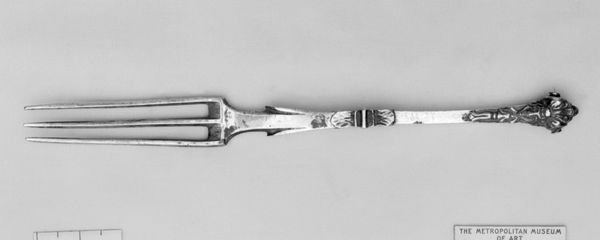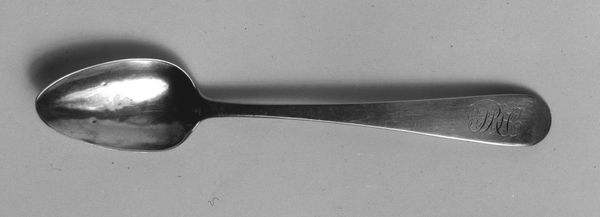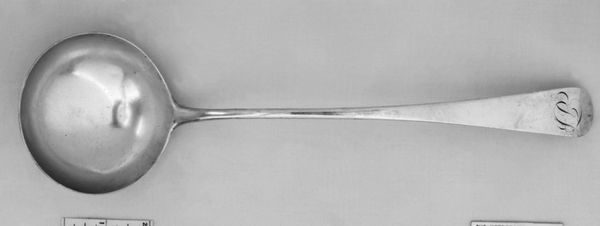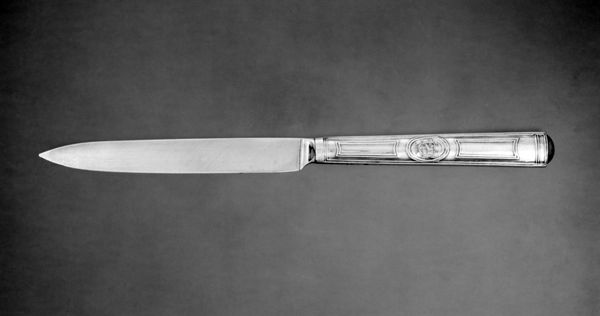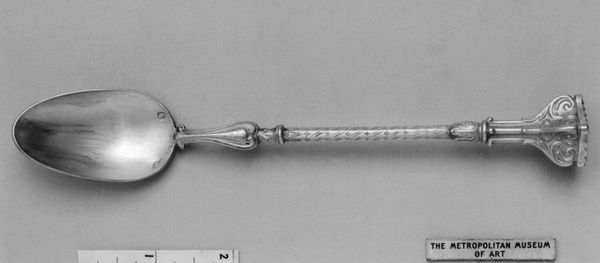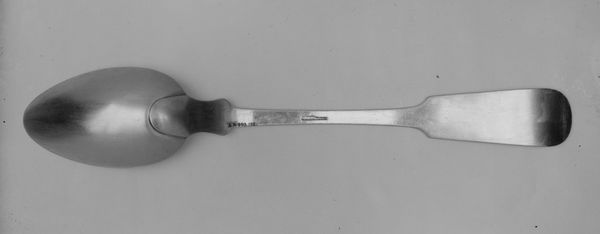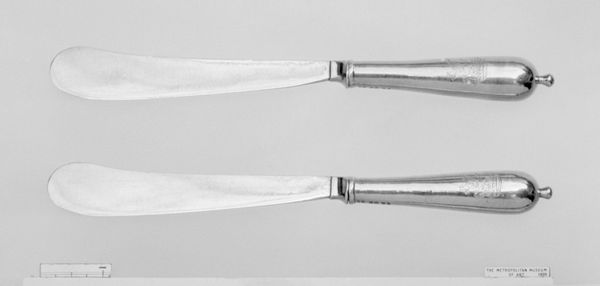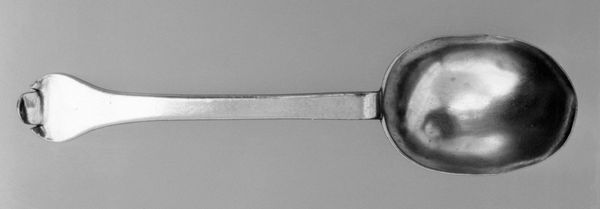
silver, metal, metalwork-silver, sculpture
#
neoclacissism
#
silver
#
metal
#
metalwork-silver
#
sculpture
#
decorative-art
Dimensions: Length: 8 in. (20.3 cm)
Copyright: Public Domain
Editor: Here we have "Knife (one of three)," a silver piece made between 1798 and 1809 by François Charles Gavet. Its starkness, particularly the material, projects a somewhat cold, yet undeniably elegant feel. What historical undercurrents might be flowing beneath this seemingly simple object? Curator: Indeed, its stark elegance speaks volumes, especially when viewed through the lens of social history. The neoclassical style places it squarely within a period of significant upheaval. A silver knife like this wasn't merely for cutting; it symbolized status, control, and access in a society wrestling with notions of equality and liberty post-French Revolution. Editor: So, possessing such an object indicated one’s position? Was this accessible for every class? Curator: Exactly. Silver, during this era, denoted wealth and belonging to a certain echelon. Notice the ornamentation. While restrained compared to earlier periods, it subtly reinforces that message of privilege and power. Consumption becomes a potent visual language, particularly in periods where traditional hierarchies are being challenged. Does the ‘coldness’ you perceive perhaps echo a sense of detachment, the icy grip of a ruling class holding tight to its advantages? Editor: That’s insightful! The ‘coldness’ now reads as the chilling indifference of a privileged class. Considering the political landscape of that time, it is difficult to separate decorative art and political statements. Curator: Precisely. Can an everyday item such as this become an artifact in class dynamics, reminding us of inequalities that persisted then—and arguably, continue to exist today? It compels us to consider who possessed and who did without, thus triggering critical inquiries about social stratification then and now. Editor: Viewing a simple knife as a reflection of social imbalances really expands the meaning of art beyond aesthetics. Curator: And remember, art is never created in a vacuum. Examining the world "around" the piece deepens the conversations that it begins.
Comments
No comments
Be the first to comment and join the conversation on the ultimate creative platform.

